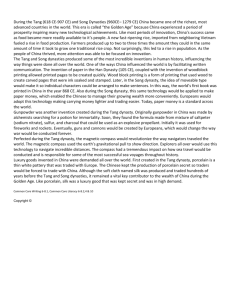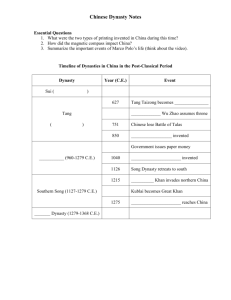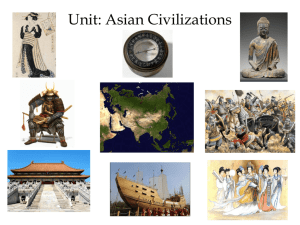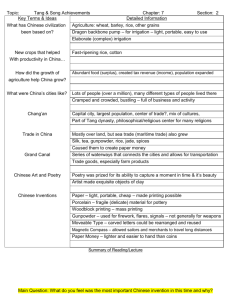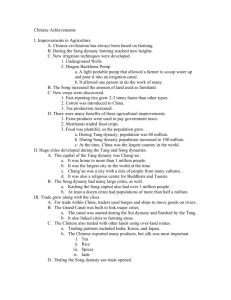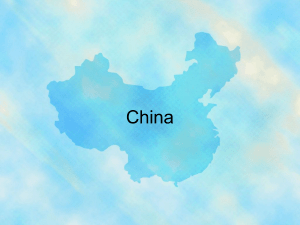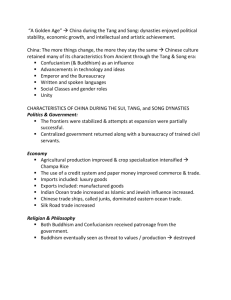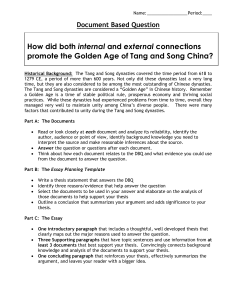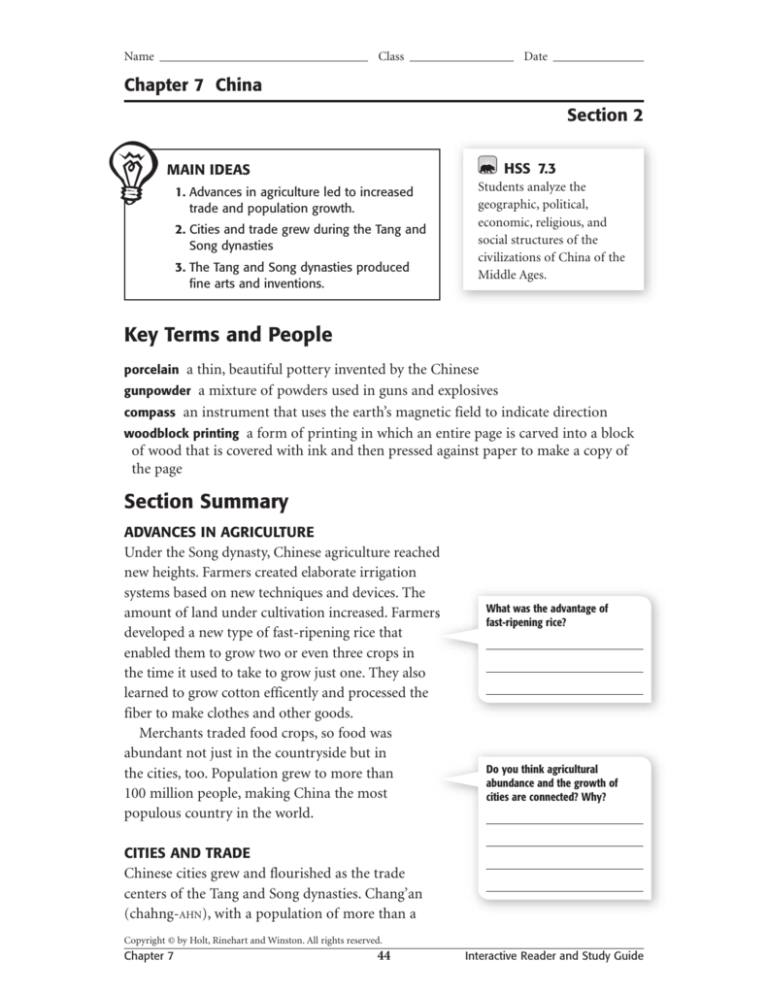
Name
Class
Date
Chapter 7 China
Section 2
HSS 7.3
MAIN IDEAS
1. Advances in agriculture led to increased
trade and population growth.
2. Cities and trade grew during the Tang and
Song dynasties
3. The Tang and Song dynasties produced
fine arts and inventions.
Students analyze the
geographic, political,
economic, religious, and
social structures of the
civilizations of China of the
Middle Ages.
Key Terms and People
porcelain a thin, beautiful pottery invented by the Chinese
gunpowder a mixture of powders used in guns and explosives
compass an instrument that uses the earth’s magnetic field to indicate direction
woodblock printing a form of printing in which an entire page is carved into a block
of wood that is covered with ink and then pressed against paper to make a copy of
the page
Section Summary
ADVANCES IN AGRICULTURE
Under the Song dynasty, Chinese agriculture reached
new heights. Farmers created elaborate irrigation
systems based on new techniques and devices. The
amount of land under cultivation increased. Farmers
developed a new type of fast-ripening rice that
enabled them to grow two or even three crops in
the time it used to take to grow just one. They also
learned to grow cotton efficently and processed the
fiber to make clothes and other goods.
Merchants traded food crops, so food was
abundant not just in the countryside but in
the cities, too. Population grew to more than
100 million people, making China the most
populous country in the world.
What was the advantage of
fast-ripening rice?
Do you think agricultural
abundance and the growth of
cities are connected? Why?
CITIES AND TRADE
Chinese cities grew and flourished as the trade
centers of the Tang and Song dynasties. Chang’an
(chahng-AHN), with a population of more than a
Copyright © by Holt, Rinehart and Winston. All rights reserved.
Chapter 7
44
Interactive Reader and Study Guide
Name
Class
Date
Section 2 continued
million people, was by far the largest city in the
world at the time. Traders used the Grand Canal, a
series of waterways that linked major cities, to ship
goods and agricultural products throughout China.
Foreign trade used both land routes and sea
routes. China’s Pacific ports were open to foreign
traders. A bustling trade was carried on with India,
Africa, and Southwest Asia. Chinese exports
included tea, rice, spices, and jade. Especially prized
by foreigners, however, were silk and porcelain. The
methods of making these Chinese inventions were
kept secret for centuries.
ARTS AND INVENTIONS
The Tang dynasty produced some of China’s greatest
artists and writers, including Li Bo and Du Fu—
the most famous of all Chinese poets—and the
Buddhist painter Wu Daozi (DOW-tzee). The Song
dynasty produced Li Qingzhao (ching-ZHOW),
perhaps China’s greatest female poet. Artists of
both dynasties created exquisite objects in clay,
particularly porcelain items with a pale green glaze
called celadon (SEL-uh-duhn).
The Tang and Song dynasties produced some of
the most remarkable—and important—inventions
in human history, including gunpowder and the
compass.
The world’s oldest-known printed book, using
woodblock printing, was printed in China in 868.
Later, during the Song dynasty, the Chinese invented
movable type for printing. The Song dynasty also
introduced the concept of paper money.
Why do you think the Chinese did
not want foreigners to know how
to make silk and porcelain?
Use the Internet or a library to
find a poem by Li Bo.
What printing technology
ultimately superseded woodblock
printing?
CHALLENGE ACTIVITY
Critical Thinking: Drawing Inferences Create a document showing an
exchange of goods between a Song dynasty Chinese trader and a foreign
merchant. HSS Analysis Skills HR 3, HI 1, HI 6
Copyright © by Holt, Rinehart and Winston. All rights reserved.
Chapter 7
45
Interactive Reader and Study Guide

